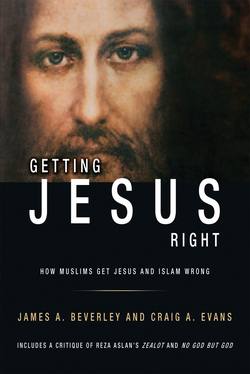Читать книгу Getting Jesus Right: How Muslims Get Jesus and Islam Wrong - James A Beverley - Страница 9
На сайте Литреса книга снята с продажи.
How Close Are the New Testament Gospels to the Time of Jesus?
ОглавлениеWhen it comes to comparing the Qur’an and the New Testament Gospels as potential historical sources, chronology and temporal proximity are very important. By temporal proximity we mean how close the written record is to the persons and events that the written record describes. Most historians agree that an account written within the lifetime of the participants and eyewitnesses is to be preferred to an account written centuries later. This is how historians think. They know, of course, that proximity is not the only criterion for evaluating the potential value a document has for historical research, but it is a very important criterion.
So when was the Qur’an written and when were the New Testament Gospels written? Muslims believe that Muhammad received the revelations that are in the Qur’an over a period of about 23 years, from AD 610 to 632, the year that he died. After Muhammad’s death, written materials were gathered, and memorized material was committed to writing.2 Within 20 to 70 years or so from the death of Muhammad, something pretty close to today’s Qur’an (“recitation”) had emerged. Most of the variant versions were gathered up and destroyed.3 Given the close proximity of the Qur’an to the lifetime of Muhammad, it is reasonable to assume that this book contains some of what Muhammad taught, or at least something pretty close, though there are difficult historical issues involved.
Jesus of Nazareth was born shortly before the death of Herod the Great, the Idumean prince whom Rome appointed as king over the Jewish people in 39 or 40 BC. After defeating the last native Jewish ruler, in 36 or 37, Herod became king in fact. He died in either 4 BC or 1 BC, which means Jesus was born in either 4/5 BC or 2 BC.4 Jesus began his public preaching and activities when he was about 30 (Luke 3:23). On the assumption that the death of Jesus took place in AD 30, it is likely that his ministry began in AD 28/29 and ran for about two years.5
Jesus was confessed by his followers as Israel’s Messiah and as God’s Son (e.g., Mark 8:29; Matt 16:16; Luke 9:20; John 1:49; 6:68–69). They and others regularly called Jesus rabbi and teacher. His closest followers were called disciples, which in Hebrew and in Greek means “learners.” This is important to remember: Jesus was known as a teacher (which is also what “rabbi” more or less meant in the first century; see John 1:38) and his closest followers were learners. And what did they learn? They learned Jesus’ teaching.
Judging by the length of the Gospels, the body of Jesus’ teaching was not extensive, especially when we remember that there is a great deal of overlap among the first three Gospels: Matthew, Mark and Luke. It was not difficult for a devoted follower to commit to memory most or all of Jesus’ teaching.6 It is also believed that much of this teaching was committed to writing and would later be drawn upon by the authors of Matthew and Luke.7
Most scholars think Mark was the first Gospel to be written and circulated. According to Papias (c. AD 125)8 the Gospel of Mark was composed by John Mark (Acts 12:12), who in the 50s and 60s AD assisted Peter, the lead disciple and apostle. Whereas the Gospel of Mark itself may have been penned in the mid- to late-60s, near the end of Nero’s rule (AD 54–68), the reminiscences of Peter may well have circulated for many years earlier. Of course, Peter himself would have preached and taught everywhere he went until he was imprisoned and executed c. AD 65. We have reason to believe that a collection of Jesus’ teachings also circulated perhaps as early as the 30s or 40s. Not too many years after the publication of Mark, the Gospels of Matthew and Luke were published and began to circulate. Later still, perhaps in the 90s (though some scholars argue for an earlier date), the Gospel of John was published.
